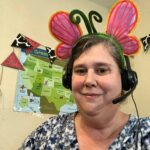Using a biography in your classroom has many great effects. It can enhance both your language arts and social studies curriculum. It helps meet the requirements by cutting down time by letting these pieces of writing serve a double purpose. Explore further why you should include biographies in your elementary classroom.
5 Reasons to Use a Biography in Your Elementary Classroom

The biography genre is often overlooked in the elementary classroom. Many teachers shy away from using these nonfiction texts with younger students. However, with proper support, biographies can enhance your teaching even in the younger grades. This article will expand on several of the benefits you might experience if you choose to include biographies in your elementary classroom.
1) Connection to Social Studies Curriculum
Probably the most obvious benefit of using biographies is the direct correlation with history. Reading a biography of an important person can bring life to a particular time period or event. By reading several biographies, students can get a grasp of life during that time period. This is a great way to teach both reading and social studies at the same time. One of my favorite ways to accomplish this was to include a biography in my guided reading groups that was related to the time period we were studying in social studies. Biographies could also be great “read-aloud” during your daily reading time.
2) Practice Nonfiction Reading Skills
Since biographies are a type of nonfiction, there are different skills involved with reading. As with any reading exercise, this is a great opportunity to grow vocabulary. Nonfiction provides practice with note-taking and using graphic organizers. Most nonfiction reading skills can be taught or practiced through the use of biographies. The wonderful thing about biographies is that you can even teach some of the skills that are more often associated with fiction reading such as characterization and sequencing.
3) Relate to the Individual
Reading biographies can help bring these historic individuals to life. Students can develop empathy for the struggles or challenges the individual from the biography faced. The names in the history book can become more “real” to the students as they learn more of the details of their lives.
4) Make Connections
When students begin to read biographies regularly, soon they will be able to make connections between the individuals. For example, students could see that Martin Luther King, Jr. and Cesar Chavez faced similar struggles with different populations during the civil rights movement. By reading multiple biographies, there are many opportunities to compare and contrast the individuals.
5) Inspiration
Perhaps the most important thing students gain from studying biographies is inspiration. As the students see how these historic figures face their challenges, our students may gain the courage to face their own challenges. They might see that people very similar to them were able to do memorable things. It is very important that teachers point out that our students can accomplish great things too!
Examples of Biographies for Students
I have a selection of short biographical passages available in my Teachers Pay Teachers Store. I have a collection of biographies for Hispanic Heritage Month, Black History Month, Women’s History Month, and more to come. These biographies come in English, Spanish, or a Bilingual bundle. Also, I include a short reading passage that is perfect for guided reading or a social studies lesson. There is a vocabulary exercise, comprehension questions, a sequencing exercise, a graphic organizer, and paper for a writing project. Be sure to check them out, and please comment on how you use biographies in your elementary classroom. Click on the photo of the Martin Luther King, Jr. Biography above to receive a FREE sample of my biography units.






